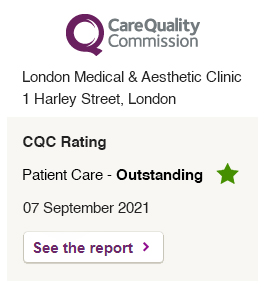Feeling out of shape after the summer holidays? You’re not alone. As a nation, we diet and hit the gym in July, let our hair down during our August fortnight in the sun, then spend September holding in our collective stomachs.The only comfort is that the “holiday’s-over spread” affects everyone – including people in the public eye, even professional athletes. When Sol Campbell returned from his recent honeymoon, football forums were abuzz with jibes about the Newcastle defender’s weight, after photographs of him in training suggested that he hadn’t held back on room service. Nick Clegg, the Deputy Prime Minister, was decidedly porkier after a recent holiday in Spain, prompting tabloid newspapers to ask unkindly: “Who ate all the paella?” But we don’t just do ourselves damage on holiday, as the indulgence doesn’t stop at the Arrivals queue at customs. According to Men’s Health, post-vacation blues causes 88 per cent of us to gain even more weight long after we’ve unpacked our suitcases – partly to comfort ourselves when faced with holiday photographs highlighting those areas of stubborn bulges on our bodies that simply refuse to budge: spot fat.
No matter how exotic the location, Henrietta Callum always looks the same in her beach snaps. The 26-year-old telesales executive from Southampton sports a bikini top – but with a sarong to cover her hips and thighs.“I have never been able to shift the pounds from my thigh area,” she says. “I eat healthily and go to the gym, and I’m happy with my figure on the whole. But it is annoying – particularly when holiday photographs come back and expose all those lumps and bumps.” Spot-fat reduction is often one of the principal aims of any dieter or gym-goer. So what causes it – and how do we get rid of it?According to surgeon Dr Ayham Al-Ayoubi, of the London Medical and Aesthetic Clinic, there are several reasons behind the appearance of bulges in specific areas of the body.“Fat is not laid down evenly,” he explains. “Most women store it around the hips and the lower abdomen first. If we took a biopsy of tissue from here, it would show the area to have a concentration of closely packed fat cells. These are accumulated to protect any babies in pregnancy; it’s survival of the species.”

Some women store extra fat around their waists. A survey compiled by weight management supplement Lipobind found that 50 per cent of British women admit to having a “muffin top” – that unsightly bulge of fat above the belt – with 33 per cent saying it is the spot they would most like to reduce. Why there? “Firstly, our shape is determined by our genes,” says Dr Ayham Al-Ayoubi. “Women often inherit their mother’s curves.” While we are each genetically programmed to store fat in differing proportions around the body, the male hormone testosterone predisposes men to accumulate fat around their abdomen rather than on their hips and thighs.However, excess weight gain around the waist in either sex is down to what we eat and drink. “If you drink a lot of white wine, for example – or even orange juice – your waistline will thicken,” says Dr Ayham Al-Ayoubi. He explains that these contain simple sugars which are processed quickly and thus turn to fat. How you drink matters, too. A 2009 study at University College London found that men and women who were binge-drinkers – consuming between 10 and 12 units on one occasion at least once a month – had larger waistlines compared to non-bingers. Men’s waists were on average two inches larger, women’s waists by four inches. Lastly, says nutritionist Dr Marilyn Glenville, blame some waistline fat on stress levels. When our body senses danger, the hormone cortisol is released. This triggers the conversion of fat into energy to give us the explosive boost we need for action; any energy not needed is turned back into fat after danger has passed. As part of the hormone action, after a surge, the body craves high carbohydrate food, to replenish its stocks. “If you don’t fight or flee when your body expects you to, the fat and glucose swimming around your system gets deposited as fat – around the middle of your body,” says Glenville. “And if you eat something sugary or fatty as a consequence of the post-stress appetite surge, any weight you gain as a result will be there, too. Fat targets the middle because it is close to the liver, where it can quickly be converted back into energy if needed, ready for the next stress attack.” In women, fat accumulates fast on our breasts, too. Dr Ayham Al-Ayoubi explains: “Fat is stored where it may be needed to make milk for breastfeeding.”If your own hot spot is upper arms, blame your age. As we get older, we naturally lose collagen, the stretchy fibres that give our skin definition. Throw in gravity, and some neglected muscle tone, and you end up with “bingo wings”, when any fat seems to hang suspended and loose from the bone, rather than being firm. What can you do about it? Personal trainer Roger Love suggests you first look at your posture. “Stand up straight, shoulders back, chest lifted, abs tight,” he says. “You’ll look better instantly, regardless of trouble spots.” If you want more than a quick fix when posing on the beach for next year’s family photographs, Love says there’s nothing else for it but to improve your diet as well as your cardiovascular fitness. “Then you can work stubborn areas with a varied exercise routine. But take a full body approach; treat the order the fat comes off as a nice surprise. You can’t choose what order fat goes in.” For trouble spots, Dr Ayham Al-Ayoubi suggests SmartLipo, whereby local anaesthetic is injected into the fatty area and a laser is inserted into the layer of fat just underneath the skin. This melts fat that is released into the bloodstream, from where it is broken down and excreted naturally. To view Dr Ayoubi in the Media click here.





